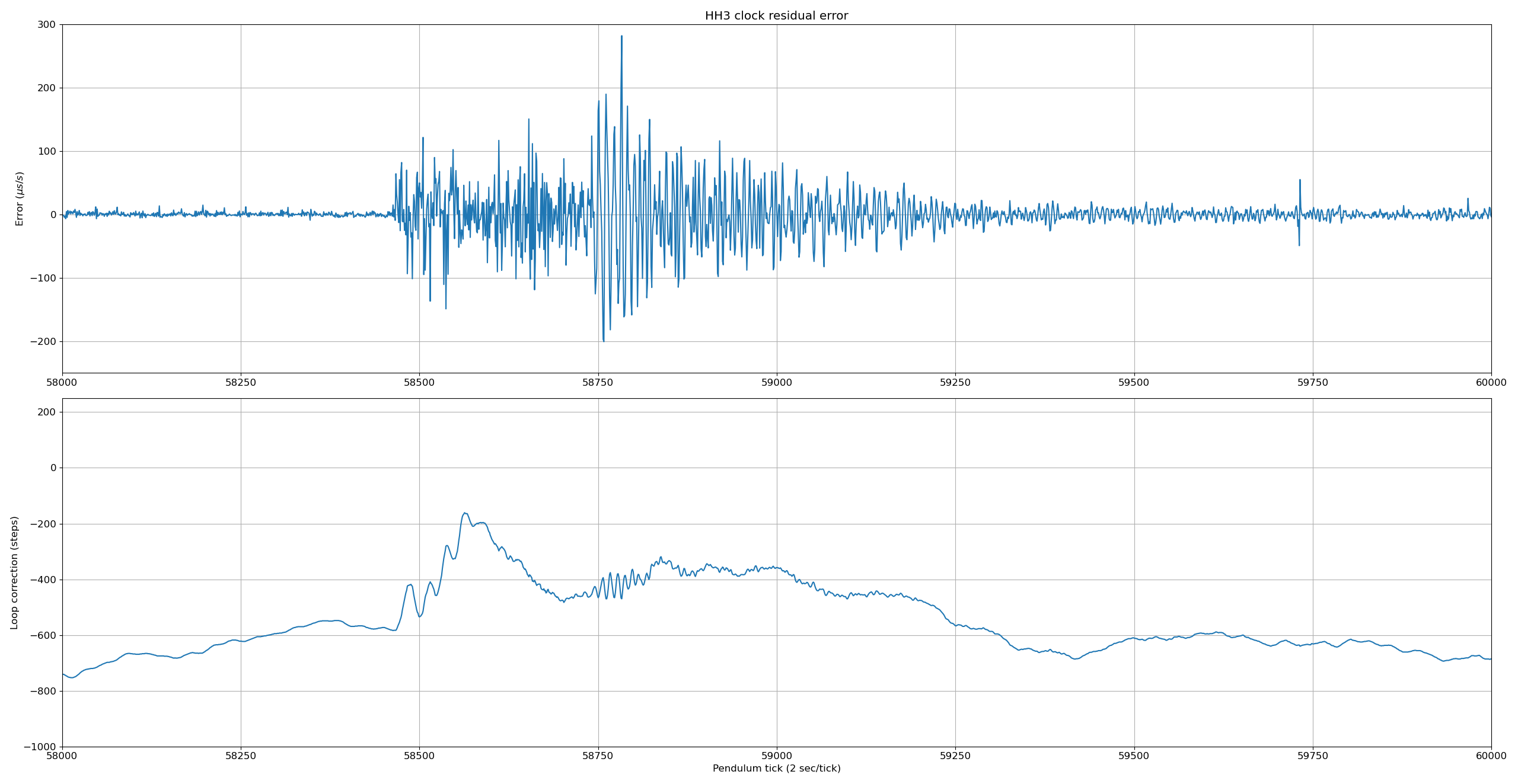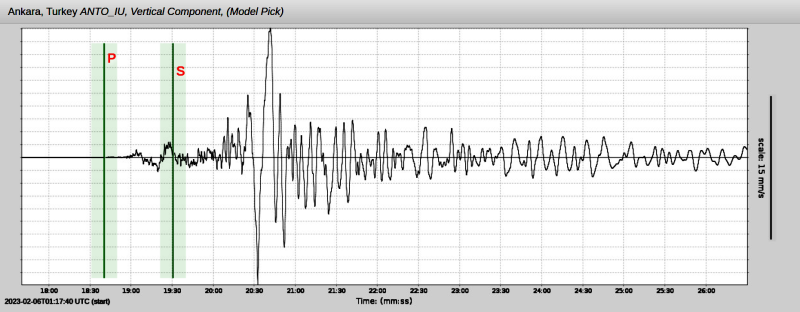It never seems to fail: at the very moment that human society seems to reach a new pinnacle of pettiness, selfishness, violence, and self-absorption, Mother Nature comes along and reminds us all who’s really in charge. The obvious case in point here is the massive earthquakes near the border of Turkey and Syria, the appalling loss of life from which is only now becoming evident, and will certainly climb as survivors trapped since the Monday quakes start to succumb to cold and starvation.
Whatever power over nature we think we can wield pales by comparison with the energy released in this quake alone, which was something like 32 petajoules. How much destruction such a release causes depends on many factors, including the type of quake and its depth, plus the soil conditions at the epicenter. But whatever the local effects on the surface, quakes like these have a tendency to set the entire planet ringing like a bell, with seismic waves transmitted across the world that set the needles of professionally maintained seismometers wiggling.
For as valuable as these seismic networks are, though, there’s a looser, ad hoc network of detection instruments that are capable of picking up quakes as large as these from half a planet away. Some are specifically built to detect Earth changes, while some are instruments that only incidentally respond to the shockwaves traveling through the planet. And we want to know if this quake showed up in the data from anyone’s instruments.
Shock and Awe
My first thought on hearing the news about this quake early Monday was a flashback to the Hunga Tonga volcanic eruption back in 2022. I recalled being mesmerized by the satellite images captured after the initial blast that showed the pressure wave it produced traveling around the world. There was also a wealth of barometric data, captured by the vast network of public and private weather stations scattered around the globe. These clearly showed a brief but strong spike in atmospheric pressure as the shockwave passed a given location, and often showed the returning reflected impulse as the pressure wave made it all the way around the world.
But those incidental detections were relatively easy, so to speak, being as they were mainly an atmospheric phenomenon. (Yes, the volcanic eruption is obviously a seismic event, but most incidental detections of that event were atmospheric.) Hunga Tonga was also very much an impulse event — an explosion. The initial Turkey-Syria quake lasted something like seven or eight minutes, which is more drawn-out and less likely to leave behind an atmospheric signature, at least intuitively. So we expect that most of the incidental detections for this event will likely be due to picking up ground waves.
One striking example of ground waves traveling across the planet is this Ground Motion Visualization (GMV). The animation shows a network of North American seismometers lighting up as the ground waves from the quake pass over the continent — red means the station is moving up, blue means downward movement. It’s fascinating to watch the rapid progress of the waves across the continent, and the way the density of seismometers in California really stands out at the end.
Watch the waves from the M7.8 earthquake in Turkey roll across seismic stations in North America. pic.twitter.com/vfbecEwsR1
— EarthScope Consortium (@EarthScope_sci) February 6, 2023
Clocks That Shake
Another incidental detection we got word of soon after the quake was from our friend Daniel Valuch at CERN in Geneva. We recently covered his amazing atomic pendulum clock build that disciplines an old pendulum clock with a cesium timebase in his lab via a simple but clever chain-drive mechanism. The mechanism uses a PLL to drive a stepper motor to pay out or retract a length of chain into a tray attached to the pendulum arm, which changes the effective length of the pendulum and subtly adjusts its period. When he got into the office on Monday morning and reviewed the PLL data, he found that the clock was really struggling for a bit at one point. And that’s how Daniel learned that there was an earthquake 1,700 km away.

Ionospheric Changes
Another fascinating Earth change resulting from this quake was the detection of ionospheric changes. We’ve covered Alex Schwarz and his “RF Seismometer” before, which seems to be pretty good at finding the atmospheric effects of large earthquakes via their impact on RF propagation. Alex uses custom SDR software and a special down-converter tapped into the IF stage of a shortwave receiver or ham transceiver to continually monitor wideband HF noise. When an earthquake occurs, he sees a spike in the noise floor as triboelectric effects in the quake zone couple with the ionosphere and change its refractive index.

Your Turn
With an event this powerful, there are bound to be tons of incidental detections. Our society is massively instrumented, so this quake is likely to have shown up in somebody’s data. Perhaps you run your own personal seismograph and saw the signal. Or maybe someone actually did manage to get a barometric signal — probably someone close to Ground Zero, if anyone. What about oddball effects? We’d wonder what a CT scan or an MRI taken during the quake would look like. How about someone with a 3D printing run going — that could yield some interesting artifacts in the print.
We understand that this is all microscopically trivial stuff compared to the enormity of the loss and suffering going on now over in Turkey and Syria. Please keep that in mind as you sound off in the comments and we attempt to at least take something positive away from this tragedy.
Header Image: Seismograph data from EarthScope Consortium
















Maybe will be cool to aggregate all data with gps position and precision reference in time
It’s been done before. GPS data from the Sendai/Tohoku-oki earthquake.
http://www.youtube.com/watch?v=1QCcVqZgNKw
Interesting as detection, but the real info is the geographic layout underneath.
I’m a grad student in Ankara, Turkey about 500km from the quake. I’m sure the mask writer in our cleanroom was running during both quakes, as well as two SEM’s. I wonder who had access to either, pretty sure even if all their family was safe they had a pretty bad day.
I hope there is minimal loss of life. Loma Prieta in ’89 was scary enough and wasn’t as strong.
“…survivors trapped since the Monday quakes start to succumb to cold and starvation.”
I think you mean dehydration. A person can live for weeks without food but only days without water.
Hypothermia can kill faster than dehydration. And no matter what, it’s a terrible situation to be trapped in…
Yes, and after an hour or so we could see there were only a few seriously damaged places. It is all about the building codes.
But I wonder is this triboelectric coupling with the ionosphere a well known phenomena? In Loma Prieta I had just left the Apple “Bandley 2” parking lot in Cupertino (If I recall that building name right) and in a GMC Jimmy with no top. At a stop light the truck started swaying and bouncing. The most striking thing was the very loud noise from telephone lines slapping together and the higher up power lines all swaying rather wildly and in unison. I have some photos somewhere of a bit of carnage in an Apple lab. The power did not go out (but natural gas automatic shock vales closed). In Palo Alto everyone was watching the San Jose news station helicopter feed on TV. The only damage in PA was a chimney that partly collapsed on a house.
But my point is about all those current carrying wires moving in unison in he Earth’s magnetic field. This seems a much more likely suspect than somehow getting the randomness of rock fractures to sum up to a far-field large area effect. In college I did a lot of squeezing of rock samples and looked for any kind of potential differences with a vibrating reed electrometer. The hope was that we could use electrodes on large monolithic masses that MIGHT have formed a bit non-isotropically due to solidifying in the Earths field. The result was all negatory.
It seems more likely that they moved in unison because they were being perturbed about equally through their insulators by the motion of their towers. You put a step function into one end of a mass-spring system like a suspended wire, and you get predictable and repeatable transverse waves on that wire. My guess is that any influence from changes in the magnetic and electric fields are going to be insignificant in comparison. I have no numbers to back this up, so just my opinion.
Yes, clearly they were moving due to the ground motion driving the power poles. I was not clear. I’m suggesting the forced motion of the wires in the Earth’s magnetic field causes some very low frequency RF or VLF modulation of a 60Hz signal. How much energy is a good question. I recall thinking it was about 1Hz at the time. I think I know someone with good info on how much wire and how much current in a given typical area. This calls for a little Jupyter notebook.
For those without a sense of how much a petajoule is (such as many residents of the only country ever to use nuclear weapons against people), 32 PJ is equivalent to the energy released by 7.6 megatons of TNT. So yeah, like about a mid-size thermonuclear bomb.
Since you went there, right mate, civilized people stick to incendiary fire boming.
Yeah, probably not all that clever of me to make a smart-ass comment about THAT. I mean, I wasn’t even alive for that, although I was definitely a Cold Warrior.
Not this earthquake, but I read an article once about a water tank level sensor that was accidentally set to record on any change of level no matter how small. An earthquake showed up clearly. You could see the water sloshing in the tank for an hour after the earth quake.
I wonder if you could measure the change in path loss on point to point microwave links as the towers holding the antennas move.
I wonder if LIGO was running.
I wonder if it would show up in packet loss on the undersea fiber cables.